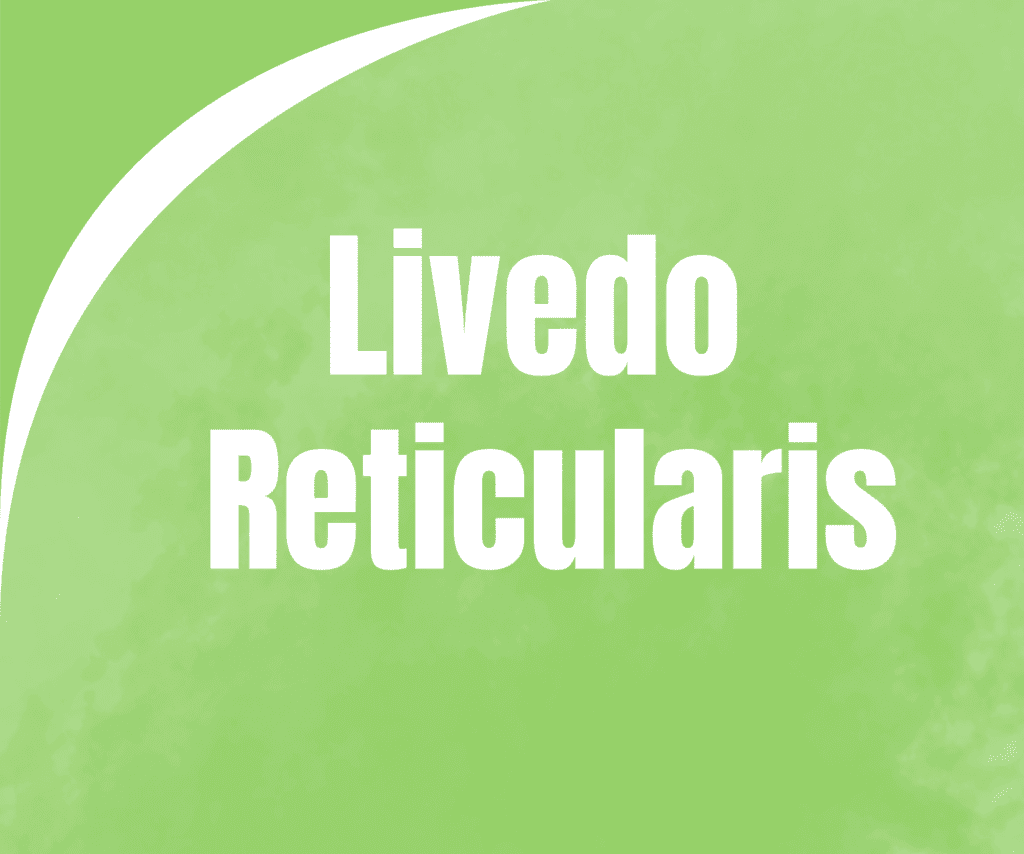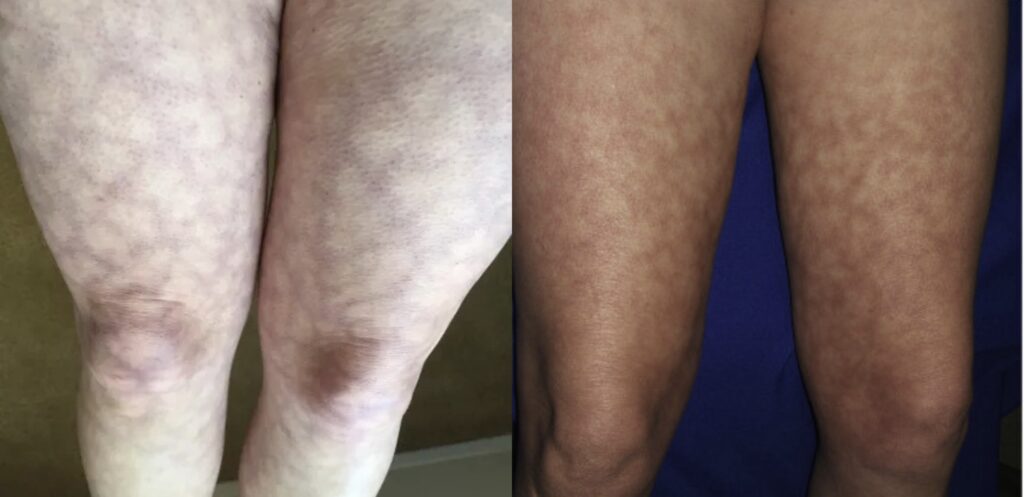
For months, my heating pad was my only solace. After long, grueling workdays, I’d collapse into bed, place the scorching pad across my thighs, and let the heat sink into my aching muscles. It was my ritual—my small, comforting escape from relentless pain.
But then, strange markings appeared. At first, faint reddish-purple lines, almost like lace, streaked across my skin. I ignored them, assuming they’d fade. But they didn’t. Instead, they darkened, spreading in intricate, web-like patterns. I kept using the heating pad—after all, what else could I do for relief?—until one day, I finally connected the dots.
A frantic Google search later, I had my answer: Livedo Reticularis.

What Is Livedo Reticularis?
Livedo reticularis is a vascular condition that causes a mottled, purplish, lace-like rash on the skin. It happens when tiny blood vessels near the skin’s surface constrict or become blocked, leading to poor circulation and discoloration.
How Does a Heating Pad Cause It?
Prolonged, direct heat can damage superficial blood vessels and disrupt normal blood flow. In my case, using a high-temperature heating pad for hours every day triggered this reaction. The heat caused my blood vessels to dilate and then constrict erratically, leaving behind those telltale purple patterns.
The Risks of Overusing Heating Pads
While heat therapy is a common pain relief method, excessive or improper use can lead to:
- Skin discoloration (Livedo Reticularis)
- Burns (erythema ab igne, or “toasted skin syndrome”)
- Worsened inflammation (in some chronic conditions)
- Nerve damage (from prolonged high heat exposure)
Best Practices for Safe Heat Therapy
I learned the hard way that moderation is key. Here’s how to use heating pads safely:
- Limit Exposure – 15-20 minutes at a time, with breaks in between.
- Lower the Temperature – Avoid the highest setting; warm (not scalding) is enough.
- Use a Barrier – Place a cloth between the heating pad and your skin to prevent direct contact.
- Rotate Therapy Methods – Alternate heat with ice packs, gentle stretching, or topical pain relief.
- Monitor Your Skin – If you notice unusual marks, stop using heat and consult a doctor.
My Wake-Up Call
Seeing those purple lines was frightening, but it forced me to rethink my pain management. I still use heat—just more carefully now. And when the pain flares, I remind myself: relief shouldn’t come at the cost of another health problem.
Have You Experienced This?
If you’ve noticed similar skin changes from heat therapy, you’re not alone. Talk to a dermatologist or rheumatologist—especially if the discoloration persists. And always listen to your body: sometimes, the things we rely on for comfort need to be used with caution.
Have you ever had a reaction to heat therapy? Share your experience in the comments—let’s spread awareness together.

